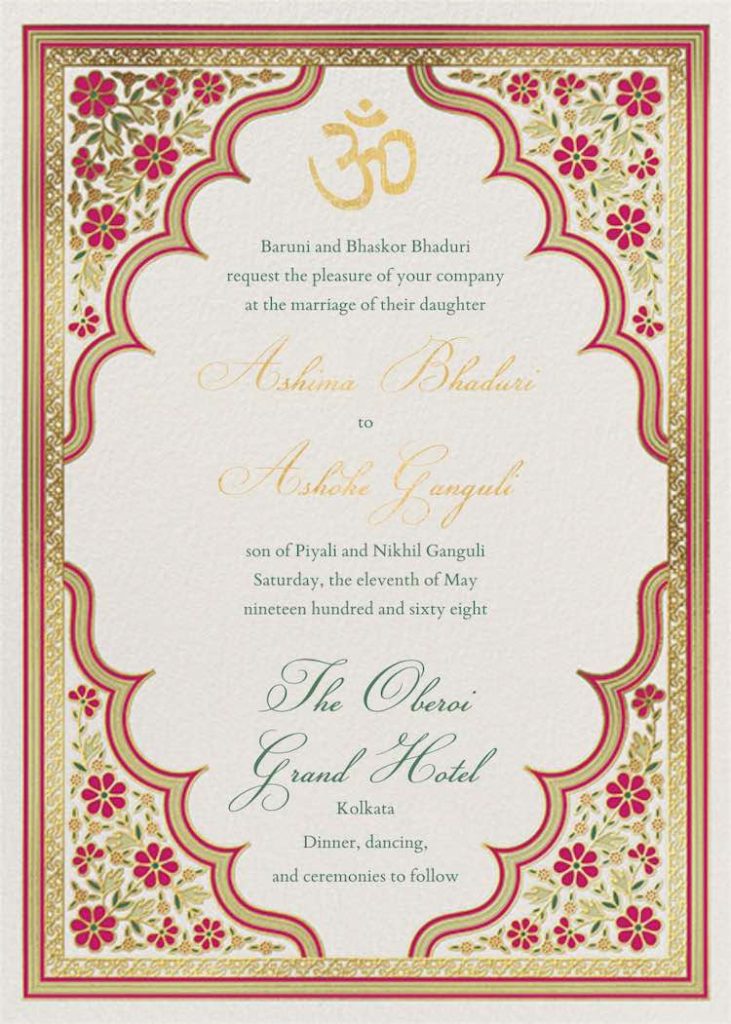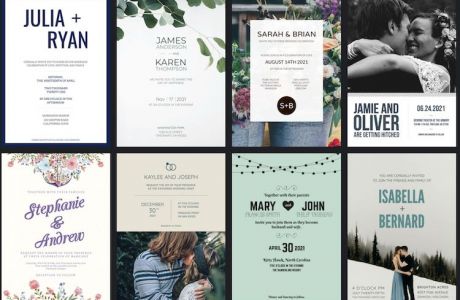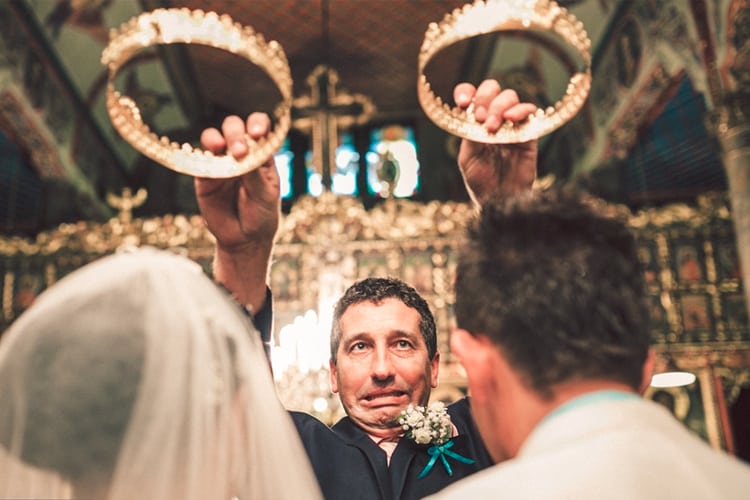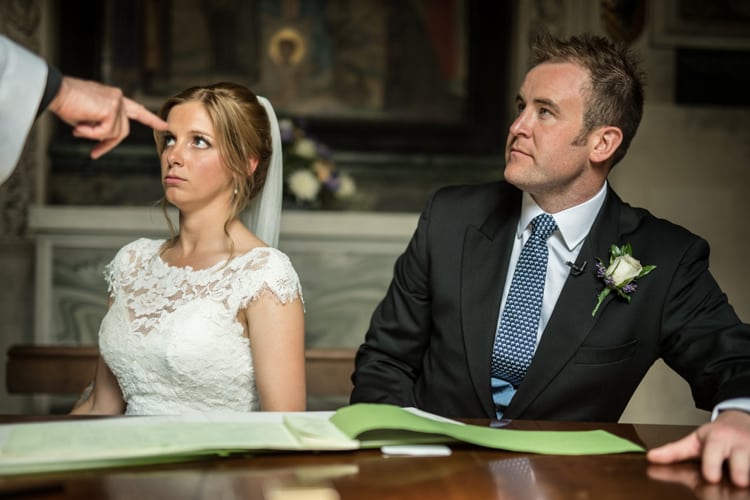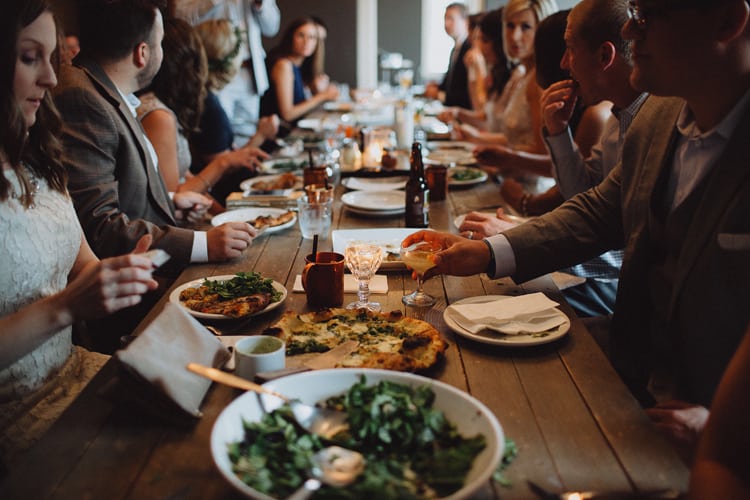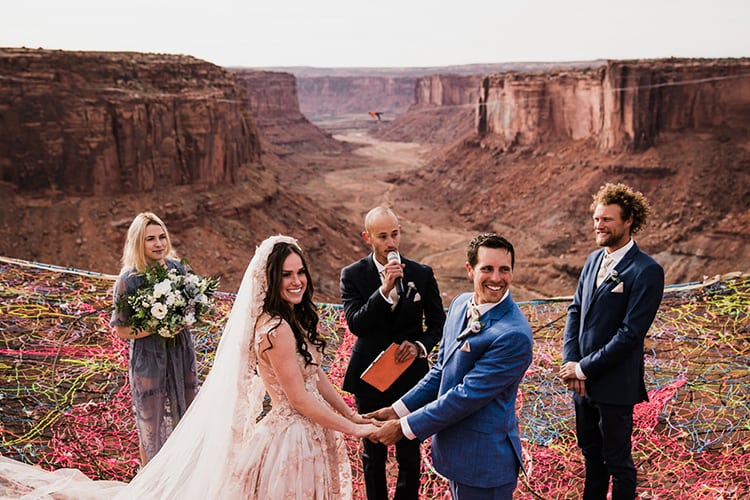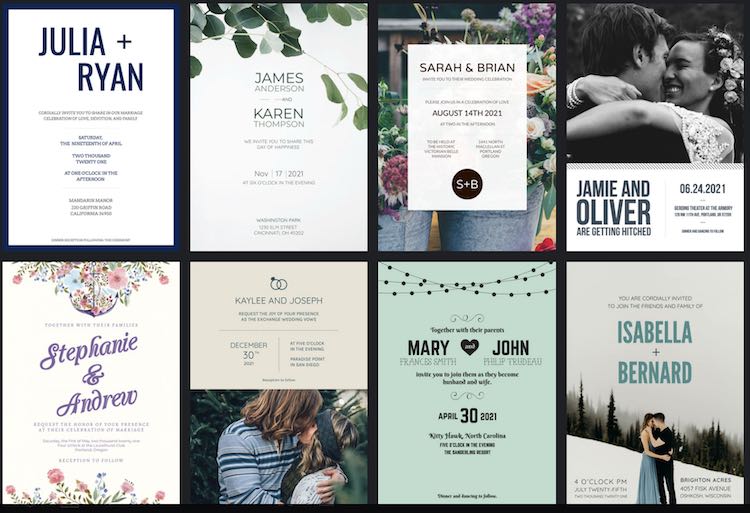
Creating wedding invitations is easy, right? You just choose a style you like and then input your wedding details and information? Well… not exactly. Like any hands-on job, you’re going to need the right tools for the job and a plan. Start by gathering up the following:
- the invitation itself (this sets the tone for the whole wedding)
- the outer envelope
- an envelope that goes inside that is unsealed
- a reception card (if yours is being held at another venue from your ceremony)
- a stamped RSVP card that is addressed to the host (i.e. probably you)
That last point is really important, as the RSVP card lets you know who among your friends and family are actually coming (or at least plan to come). And you’re not the only ones who need to know this information— your venue, catering company, and even other vendors such as transportation and hotel contacts will need a final count well in advance of the wedding date.
“The number of RSVPs you are sent back will determine final costs that you, or whomever is paying for your wedding, will be responsible for, and many times, changes cannot be made past this date,” explains Danielle Rothweiler of Rothweiler Event Design in Verona, New Jersey. “This means that if someone RSVPs after the date, you might feel pressured to try and accommodate them, but your venue might not be able to at that point.”
Aside from costs, the RSVP also dictates additional details, such as having places at tables for people to sit, the actual number of seats, the amount of wait staff, the stocking of the bar (especially if your friends are boozers), how many centerpieces you will need, and even the capacity of the room, explains Jodi R.R. Smith, owner of Mannersmith Etiquette Consulting, in Marblehead, Massachusetts.
There is an art to sending RSVPs in a timely manner that allows guests enough of a waiting period before they have to respond. You want to give them buffer time so they aren’t rushed, but also give yourself enough buffer time after receiving them to make sense of the grand total.
RSVP Cards: Themes, Colors & Textures
Ideally, when choosing an RSVP stationery vendor, you stick with the same person or company you hired to create the rest of your wedding stationery, says Rothweiler. “Colors and textures can change from vendor to vendor, so keeping it under the same vendor will create a seamless and cleaner look,” she says. “Plus, using only one vendor means they’ll already know the name of the fonts you are using, and will be able to put the entire timeline together from when you have to make decisions to when things will be done and sent out by.”
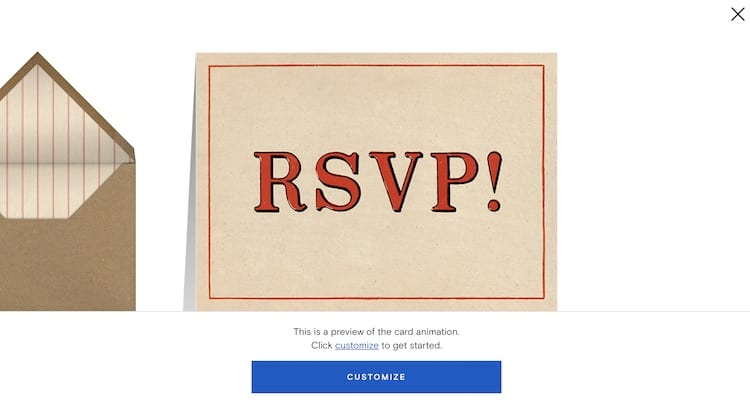
Your theme and actual wording of your RSVP card (as well as the rest of your wedding stationary) can be as formal or informal (even humorous!) as you want. “Go with whatever works with your personalities and wedding design—here really are no rules here anymore, so have fun with this and ask your stationery vendor for some ideas!” says Rothweiler. Whenever possible, she suggests asking to see samples before ordering an RSVP card because colors and fonts can look very different on a computer screen than they do once printed. “You might care way more about the thickness of the paper than you think, so make that appointment before writing that check,” she adds.
What Else Needs to Be on an RSVP Card (Beyond Yes or No)
The single-most important thing an RSVP reply card should include is a line asking a “yes” or “no,” according to Rothweiler. “None of this ‘regrets only’ nonsense—that might work for birthday parties, but should be avoided with weddings,” she says. If your venue or catering company is requesting that you have an idea of the exact (or estimated) number of meals, for example 70 chicken dishes and 85 beef dishes, you’ll want to include an area for your guests to check off what they will want to have.
Next, include a line for a plus-one if you are allowing guests to bring someone. Simply leave a space for them to check off whether or not they will be bringing a guest and request that they include their name(s) on the reply. This way, you will know the full spelling of that person’s name when you create the final guest list.
Check out our complete guide to wedding invitation wording, too.
Don’t Forget the RSVP for Transportation
If you are providing transportation, Rothweiler recommends including an area for guests to select taking that transportation, be it a shuttle, bus or trolley, or declining it. This will help you determine how large of a vehicle (or how many) you will need.
“Chances are, you will have to book transportation in advance of even sending the invites because many good companies book out, but letting guests know that they have to make a decision in advance helps solidify their plans and reminds them that it’s not being provided for free—you actually have to pay for it,” Rothweiler says. Anything else you need a count for should also be included, such as a breakfast, welcome drinks, or any other activities.
How to List Names on the Envelope So You Don’t Sound Like a Clueless, Sexist Jerk
You also want to include an envelope along with the RSVP card so that your guests can mail it free of charge and with the address already included. You should write the guests’ names formally, for example Mr. John Smith—or, if the person is married and you are addressing it to a couple, “Mr. John Smith and Ms. Susan Smith.” Avoid “Mr. and Mrs. Smith” since that reduces the woman to being a mere “Mrs.” to the man–without even a name.
If this old-school etiquette mixed with modern PC-correctness feels too stuffy, Smith suggests trying “The Smiths” or “Susan and John Smith.” If the guests you are inviting are medical doctors, it’s customary to honor their title: “The Doctors Smith,” “Dr. & Dr. Smith,” “Doctor & Doctor Smith,” or “Doctor Deborah Smith & Doctor John Smith.” If one is not a doctor, then “Doctor Deborah Smith & Mr. John Smith” is just fine.
Regardless of gender, Smith suggests using the “and” or “&” to indicate that the guests are married. If they are not married, she suggests listing their names on separate lines. Not sure of their wedded or relationship status? Take a moment to reach out to ask what form of address the individual prefers.
When Do You Send the RSVP Card?
The optimal time to send out invitations along with RSVP cards is 6 to 8 weeks before the wedding date (you should have sent your “save the date” notes 4 to 6 months in advance). You might want to send out international invitations (to those living overseas) a little earlier so that they have additional time to make travel arrangements.
“Travel is expensive and time-consuming; your far-flung guest should have all of the event information well in advance,” says Smith. Hosts should request that responses are returned 3 to 4 weeks prior to the event, but make sure that this time frame works with your vendors first. For example, if your caterer needs a final guest count 2 weeks before your wedding date, you might want to request that responses be within that time frame. And don’t forget that there are always guests who won’t respond in a timely manner so you’ll have to track them down for their RSVP—and this takes time.
How Do You Respond to a Wedding RSVP?
If you are the one signing off on an RSVP to let the hosts know whether or not you plan to show up — and with whom — you’ll want to do so in a timely manner. You also want to make sure you fill out each and every field requested so that you’re actually giving the bride and groom the details they need from you.
What to never do: What you should never do is write in a plus 1 (or plus 2, 3, etc.) unless you are formally invited with a guest. Not sure? Rothweiler recommends checking the outer envelope to see which names appear. Also check the response card. If there’s no mention of a plus one, you aren’t being offered one! Select your menu option if you’re asked and include any note dietary restrictions or allergies so that the catering company and/or venue can prepare for any substitutions or outside arrangements.
Add a personal note scores extra points: If you are RSVPing “yes,” Smith adds, it’s a nice touch to include a note of excitement on the RSVP as well. It can be as simple as “Looking forward to dancing with you at your wedding” or “What a wonderful celebration” or even “We cannot wait to see you.” All of these comments help add to the festivities. Can’t hurt.
When the answer is “no”: If you are declining the RSVP, it is best to just keep it simple and check off the box provided (typically “no”). “If you feel that this is going to come as a shock to the couple, or if you are very close to them, it’s best to call them in advance of sending it back—and yes, you still need to send a gift,” advises Rothweiler.
Online Invitation Templates: Non-Corny Visuals
Yes, you can opt to have a digital/email invitation in addition to—or instead of—printed and mailed invitations. Sites like Paperless Post offer “Save the date” and RSVPs cards, and can help you follow up with guests with RSVP tracking and followup messaging.
They also work with printing companies (like Paper Source) that can bring your designs to life (they have collections with Oscar de la Renta, kate spade new york, Rifle Paper Co., and others). And you can have direct links to your registry and accommodations.
Below are some samples from their site in a variety of categories.
Classic Wedding Invitation
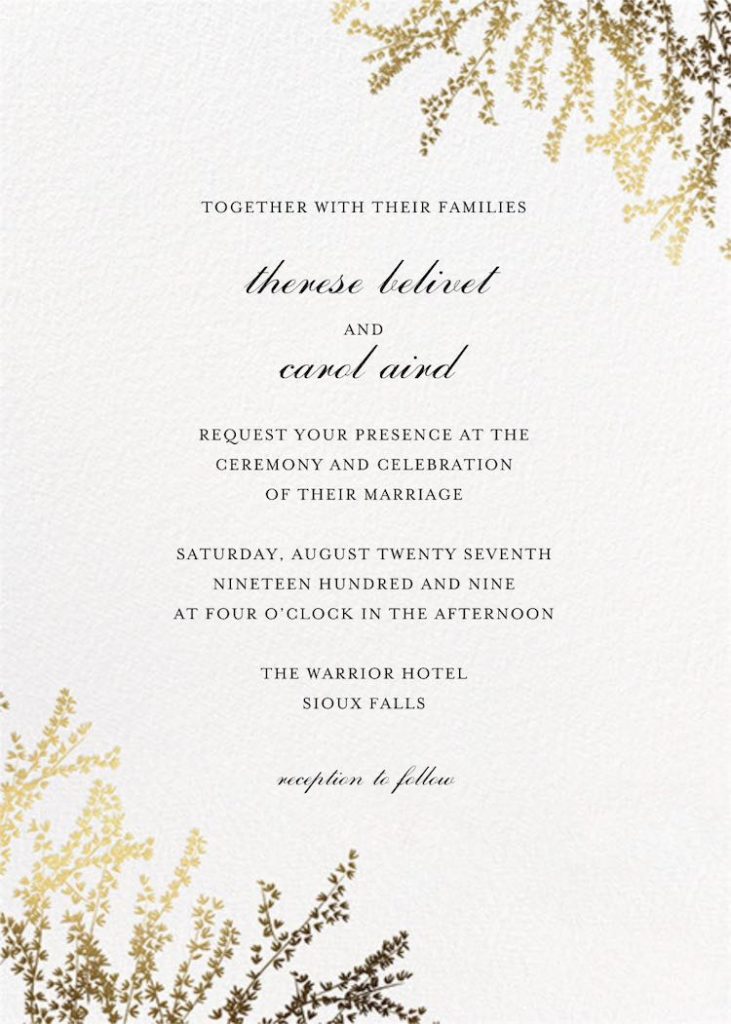
Modern Wedding Invitation
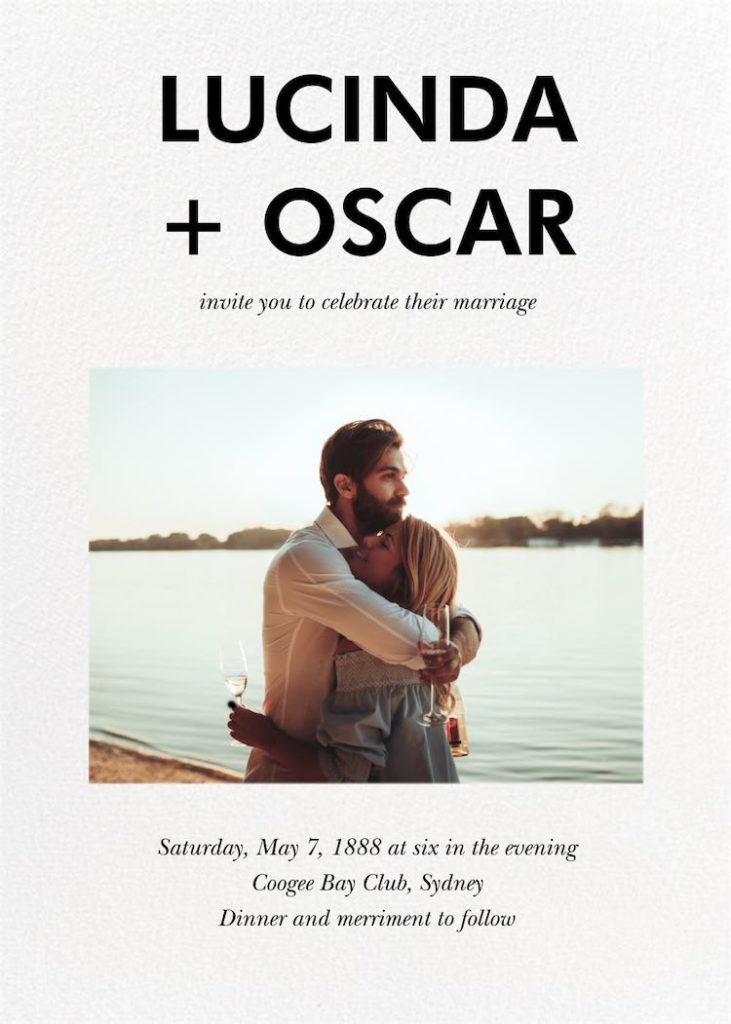
Rustic Wedding Invitation
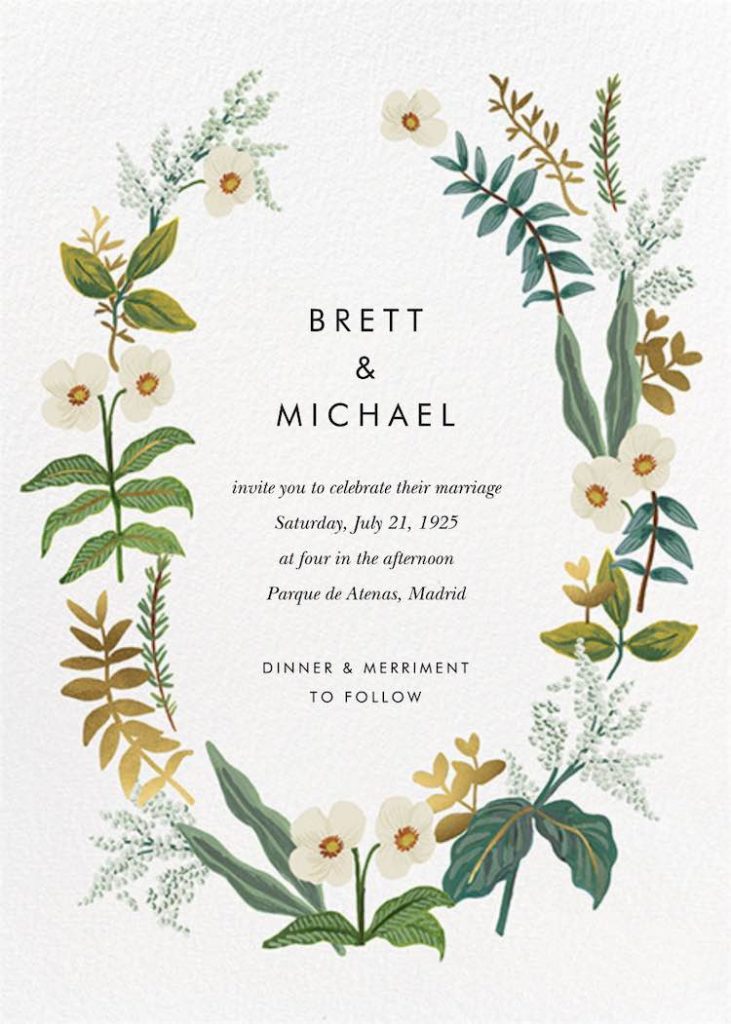
Romantic Wedding Invitation
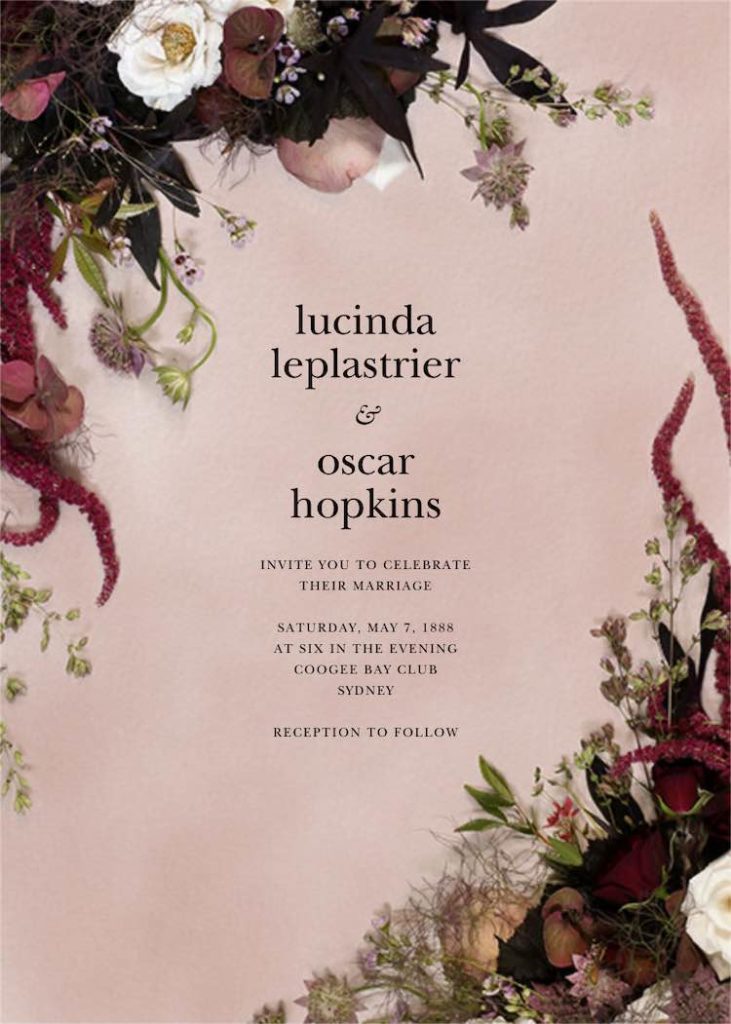
Destination Wedding Invitation
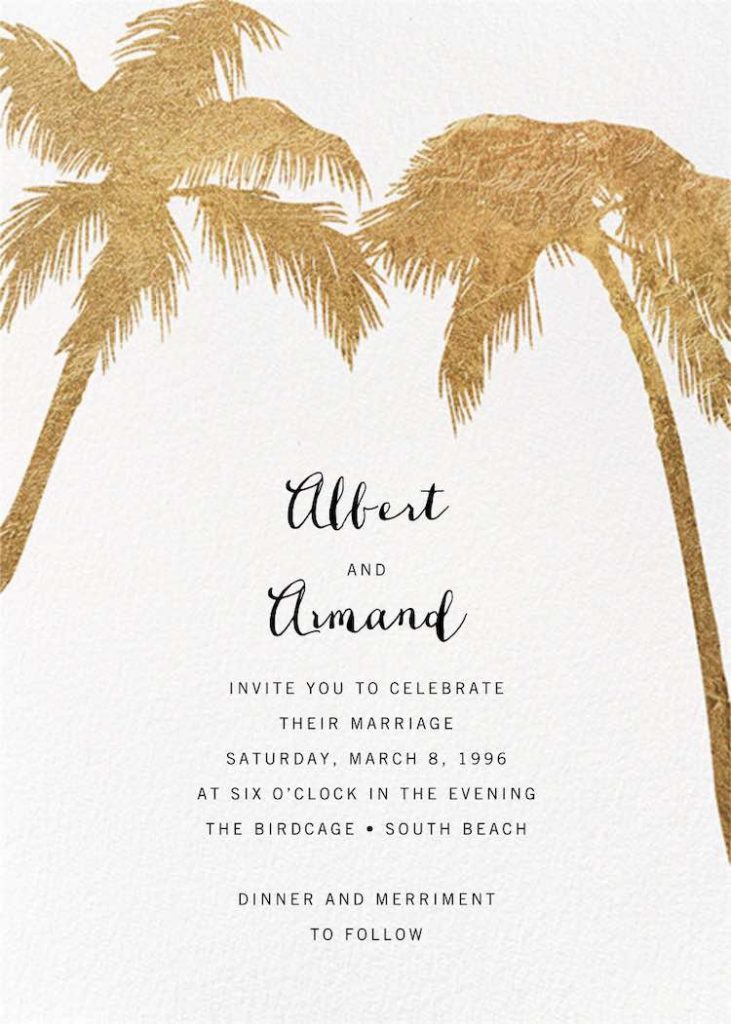
Indian Wedding Invitation
